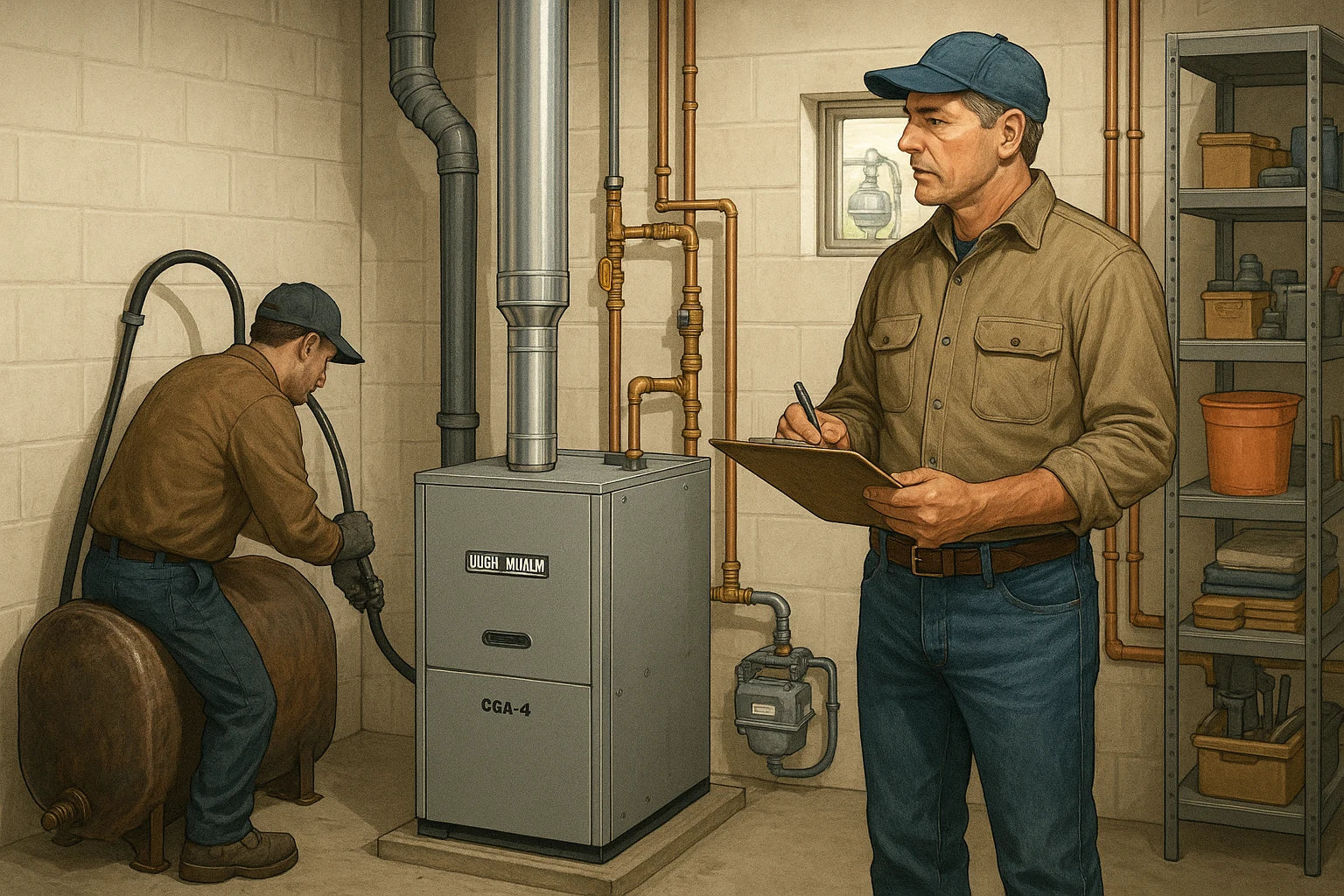Mike Sanders has had enough of unpredictable oil delivery costs and the constant maintenance demands of his aging system. He’s ready to make the switch to natural gas—but wants to be sure he’s not stepping into a project full of surprise costs and red tape.
If you’re thinking about replacing an oil boiler with a natural gas system like the Weil-McLain CGA-4 Series 3, this guide will walk you through everything you need to consider: from utility access to equipment differences and what it means for your wallet.
🛢️ 1. Why Switch from Oil to Natural Gas?
✅ Pros:
-
Lower operating costs (natural gas is ~25–40% cheaper per BTU)
-
Cleaner combustion (less soot and residue)
-
More efficient heat delivery
-
No more fuel deliveries
-
May increase home value
❌ Cons:
-
Upfront cost of conversion
-
Must have natural gas service nearby
-
Chimney liner and burner replacement often required
📊 U.S. Energy Information Administration – Fuel Cost Comparison
🏙️ 2. Do You Have Access to a Natural Gas Utility Line?
Before anything else:
-
Call your local gas utility
-
Ask: "Is gas service available at my address?"
-
Request: "Line installation cost estimate"
Scenarios:
-
Urban/Suburban Homes: Likely already connected
-
Rural Homes: May require 50–200 ft gas line trenching ($15–$25/ft)
🔌 Utility line install cost: $500–$5,000 depending on distance and municipal fees
📝 Mike’s Tip: Always confirm local ordinances or fees for new gas hookups.
🔧 3. What Needs to Be Replaced (and What Can Stay)?
| Component | Reuse? | Notes |
|---|---|---|
| Radiators/baseboards | ✅ | No change needed |
| Distribution piping | ✅ | Compatible with hot water or steam |
| Oil tank | ❌ | Must be decommissioned and removed |
| Oil burner | ❌ | Replaced with natural gas burner |
| Boiler (if replacing) | ❌ | Choose gas-rated model (like CGA-4) |
| Chimney/vent | ⚠️ | Must be relined for gas venting per code |
| Thermostat | ✅ | No change unless upgrading controls |
📘 Weil-McLain CGA-4 Installation Manual
🔥 4. Why the Chimney Liner Matters
Oil-fired boilers produce hotter, drier exhaust than gas. When you switch fuels, your masonry chimney may be oversized or unlined.
Code Requires:
-
Stainless steel chimney liner for safe gas exhaust venting
-
Protects against condensation, draft failure, and CO risk
💸 Liner cost: $1,000–$2,500 installed
➡️ Required for venting the CGA-4 unless using a B-vent system.
🧯 5. Permits and Safety Checks
Switching fuels isn’t just plug-and-play—it requires inspections and permits:
-
Gas permit (municipal)
-
HVAC/mechanical permit
-
Utility inspection of meter and supply line
-
CO detector installation often mandatory with gas appliances
📋 Plan for $300–$800 in permits and inspection fees
🛠️ Ask your contractor to bundle all permitting into their quote.
💸 6. Total Cost of Oil-to-Gas Conversion (2025 Estimates)
| Item | Cost Range |
| Remove old oil boiler & tank | $750–$1,500 |
| Gas line to house (if needed) | $1,000–$5,000 |
| Chimney liner install | $1,000–$2,500 |
| New CGA-4 boiler + labor | $4,000–$6,500 |
| Permits/inspection fees | $300–$800 |
| Total Estimate | $7,000–$16,000 |
🧠 Mike’s advice: Get at least 3 quotes from licensed HVAC contractors. Ask for line-item breakdowns.
📉 7. Long-Term Fuel Cost Savings
| Fuel Type | Cost/Unit (2025 avg) | Cost per MMBTU |
| Heating oil | $4.75/gallon | ~$34–$36 |
| Natural gas | $1.40/therm | ~$14–$16 |
➡️ Typical savings: $1,000–$1,500/year for a 2,000 sq ft home
⏳ Payback period: ~6–8 years
📋 8. Steps to Convert from Oil to Gas
-
Confirm utility access and meter sizing
-
Get multiple quotes from HVAC contractors
-
Schedule old boiler/tank removal
-
Install new gas boiler and chimney liner
-
Pass municipal and utility inspections
-
Final hookup and CO detector verification
➡️ Plan for 2–3 days of downtime during conversion
🧯 Mike’s Tip: Do it in early fall—before winter rush hits.
✅ Conclusion: Is Switching from Oil Worth It?
For Mike Sanders—and thousands of smart homeowners like him—switching from oil to natural gas can save thousands over time, while reducing hassle and improving reliability.
If you:
-
Have utility access
-
Need to replace an old oil boiler anyway
-
Want cleaner, cheaper fuel long term
...then investing in a new system like the Weil-McLain CGA-4 makes both comfort and financial sense.
Just make sure you account for all the moving parts—from chimney liner to permits—and plan the timing carefully.
🔧 In the end, it’s not just a fuel switch. It’s a home upgrade that pays for itself in peace of mind and performance.
In the next topic we will know more about: Why Boiler Sizing Matters







